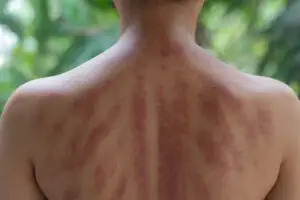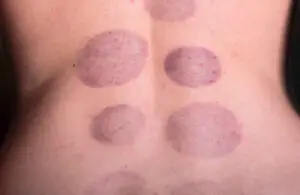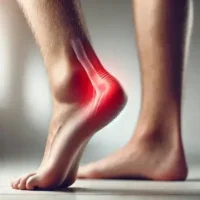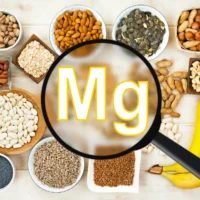Gua Sha and Cupping are natural, centuries old medical techniques. Cupping has become more known due to its use in professional sports people. Michael Phelps famously boasted post-treatment marks during the 2016 Olympics. Gua Sha is increasingly being utilised in beauty routines for the face.
Both techniques are used for their ability to reduce pain in both chronic, and sub-acute pain presentations. Other therapeutic benefits include reducing inflammation, oxidative and muscular stress as well as immunoprotective benefits.
Cupping and Gua Sha bring blood to the surface, just below the skin. Gua sha does this via friction, and cupping via suction. This process is called extravasation. Extravasation does not damage blood vessels, or break the skin. However it will cause coloured marks varying from light red to dark purple. It is important to note that while they appear and fade like, they are not conventional bruises, nor are they painful.
Gua Sha

Gua Sha began in 475 BCE in ancient China . Where the act of scraping the skin cleared and dispersed diseases. It was used to treat pain (acute and chronic), nausea, coughing, limited range of motion, fever, and inflammation.
“Gua” translates to scrape, and “sha” to rash, this means after treatment can result in petechiae. Petechiae is the result of a breach in the tiny capillaries just under the skin. This is different from bruising and usually fades within 72-96hrs.
Over the years the tool progressed from using hemp rope and water, to willow branches, copper coins and buffalo horns. Today tools made from metal, wood, ceramic, pottery, or stone (e.g., jade and quartz) are used, or even a Chinese soup spoon as our Osteopath Teille is partial to using, just ask her about it!
It is a mild to firm, unidirectional pressure stroke using a blunt tool to stimulate microcirculation. It stretches the connective tissue and softens adhesions; this helps to improve blood and lymphatic circulation.
Cupping

Originally used in folk medicine from 1550 BCE in ancient Chinese, Egyptian and Middle Eastern Cultures. Also in England in the 1830’s in hospitals to treat contagious diseases. The cups were originally made from animal horns, pottery or bamboo. They are now they are commonly made from glass or plastic.
The cupping technique uses heat or pump-suction to create a vacuum seal which placed on the skin. This breaks up adhesions that are blocking the flow of qi and nutrients to different parts of the body. Stimulating lymphatic and blood flow which aids in the removal toxins and facilitates healing.
The cups can be motionless, or with the aid of a lubricant (e.g. oil) you can glide the cup across the skin. Some people are intimidated by the circular marks it leaves behind, however these are painless and normally disappear within a week.
Our myotherapist Ricki-lee is a big fan of cupping, why not try it out at your next appointment with her?
References
- https://www.healthline.com/health/gua-sha#benefits
- https://www.medicalnewstoday.com/articles/320397
- https://dantianhealth.com.au/what-is-gua-sha/
- https://blog.sidekicktool.com/gua-sha-vs-cupping-which-one-is-better/
- https://vitruvi.com/blogs/health-and-wellness/gua-sha-vs-facial-cupping
- https://www.ttpacupuncture.com/services/cupping-and-gua-sha/
- http://angeladraper.com/angela-draper-acupuncture/why-you-should-try-gua-sha-and-cupping-additional-acupuncture-therapies-that-treat-beyond-pain
- https://www.hamptonwickhealth.com/hwhblog/2019/11/5/tuina-cupping-amp-gua-sha-what-is-it







